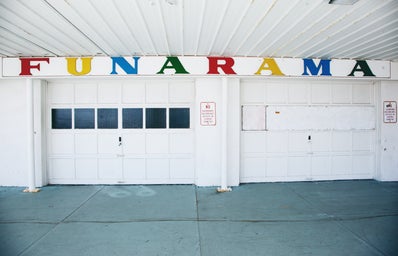I have to confess, I love a good murder. As a kid, I already loved reading mystery, horror, and thriller novels (I had an appreciation for Stephen King) and I never missed a single episode of Criminal Minds on a Sunday afternoon. I have years of experience watching, listening to, and reading about murders but the idea to share my favourite story came when I started to listen to a Spotify podcast called “My favourite murder”. I am not a big fan of the podcast itself, but the idea of sharing true crime stories is indeed excellent. I hope you are just as excited to read about all the details below as I was when I wrote this article. But be aware; this story is not a fairy tale, this story does not have a happy ending, although it has a lot of endings, especially when it comes to people’s lives.
Angel Makers in Tiszazug, Hungary, 1929
Once upon a time, beyond the Never-ending seas, passing the Chrystal mountains, where a little piglet with curly tail is digging in the dirt, was a small village, called Tiszazug. The place itself had a magical atmosphere and a couple of dozens of houses with neat gardens by the bank of the stunning Tisza river. But at that time an evil soul moved in the village, working as a midwife, and suddenly no fewer than 50 inhabitants of Tiszazug were mysteriously poisoned with arsenic.
The reason for the murders was so simple it is actually brilliant, and it is a consequence of the historical era at that time. In contemporary Hungarian society, it was a tradition that the families chose the future husband for their daughter and the daughters were forced to accept their decision. Divorce would not have been a solution to the coercion since the institution of divorce was not socially accepted at that time. During World War I, men were sent to fight for the Austro-Hungarian Monarchy, meanwhile, Tiszazug and the other surrounding villages seemed to be a good place to accommodate allied prisoners of war. Many of the women living there discovered this and took advantage of the situation, acquiring foreign lovers while their husbands were away fighting for their country. However, when their husbands returned, they naturally rejected their wives’ complicated love affairs and wanted to continue their previous lives and way of living. In this rough period, the midwife persuaded the women who wanted to be free from their difficult situations, to poison their husbands with arsenic.
Arsenic seems like a very easy and straightforward way of killing; it doesn’t make any mess, it kills quickly and you can poison your target without them having even the slightest clue. You can put it into food and drinks, and it has similar symptoms as food poisoning (except that you die at the end). However, it is not something you can find everywhere. But the midwife had demonic luck. It just so happened that the midwife was sitting next to a sick woman who was covered in flies. She bought some flypaper, but the patient was still covered with flies. The midwife tried putting sugar on the flypaper so the flies would go for the sugary paper instead. Sadly, the kitten of the patient licked the sugar off the flypaper and was found dead, which gave the midwife an idea. She then fed chickens and a dog the flies off the flypaper, and soon they died too. Then she tried it on the patient she had been trying to cure. It worked, and the patient died as well. This is how the midwife discovered arsenic.
After the initial murders, some had started poisoning their own family members and relatives when they became “burdensome” to them (e.g.: because of illnesses, alcoholism, violent behavior). Many villages struggled with poverty, so the land was particularly valuable at the time, therefore another motive could have been land acquisition and the avoidance of fragmentation of the land. At this time, poisoning became a kind of “fashion” in that area of Hungary, and after the events became public, Tiszazug was referred to as “the village of death”.
The women of Tiszazug kept their secret for years and there is no exact number on how many people they killed with the help of this evil midwife. At this point, you’re probably asking yourself how could they keep it in secret for so long? Well, the midwife’s distant relative was the local doctor and her cousin filled out the death certificate, and of course, she had access to everyone – all very handy when it comes to a murder right?
Luckily, in 1929 the Angel Makers were discovered thank to three events. Firstly, one of the women living in Tiszazug, who had also committed some of the original murders, was visited by two acquaintances whom she tried to poison too. However, they survived. Of course, people talked at that time as well, especially after such a horrible experience. Secondly, a corpse washed up on the river bank of a nearby village. The body was examined by medical students, and they found high levels of arsenic, causing further investigation. Thirdly, and probably most importantly, in 1929 a local newspaper received an anonymous letter accusing the women of Tiszazug of poisoning their family members. This made the authorities start a real investigation into the case. They excavated dozens of corpses from the local cemetery and found a high level of arsenic in most of the bodies.
28 suspects were prosecuted, with the charge of committing 162 murders. However, there is no guarantee of the exact numbers of victims as some other sources estimate this number to be around 300. At that time, the case was a big deal. It was investigated in detail, and between 1929 and 1931, 12 trials were held. The authorities dealt with the cases separately in order to avoid the press. The trials ended with 3 death sentences (three convicts were hanged),10 were sentenced to life imprisonment and the rest imprisonment of 5-10 years.
This is my favourite murder, not only because a lot of lives were taken away, but because it was done smartly, and with a reasonable motive when looking at the historical era. I am not saying it was okay what the Angel Makers of Tiszazug did, but it really makes you think about all the problems in society and how they can create such events. I hope you enjoyed this crime story and I hope I made you think as well.


